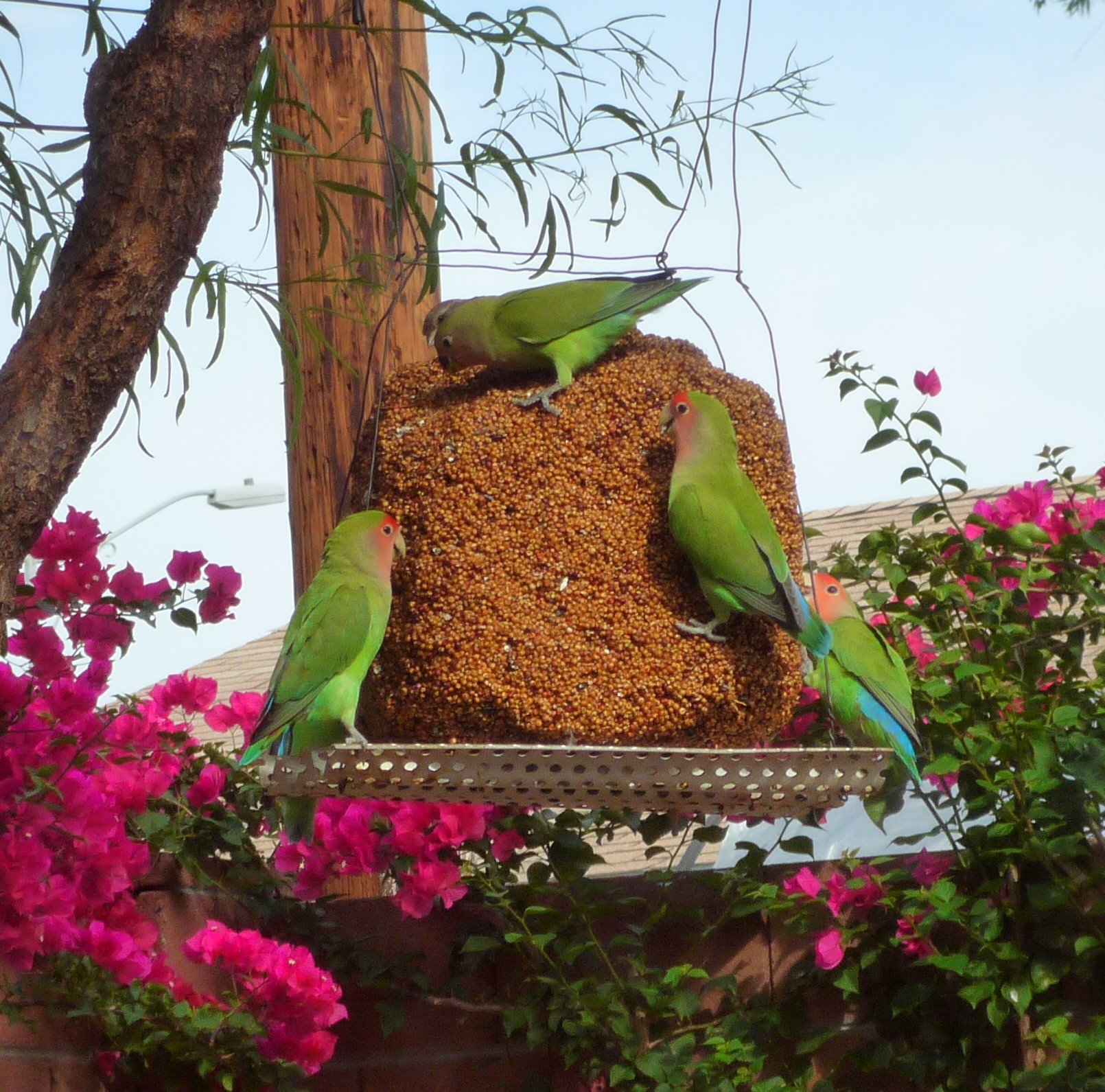(Image courtesy of Appletree Garden Designs)
There are many potentially beneficial garden activities, but one of the most popular--and highly advocated by conservation organizations--is bird feeding. Although scientists have been studying the biological impacts of bird feeding for several years, there has been very little work concentrating on the human dimension--until recently, that is. An international group of researchers from Europe and Australia has just published a study investigating which characteristics are most likely to predict bird-feeding behavior. Their main goal in identifying these traits was improving the ability of conservationists to develop effective outreach programs. However, their findings might also be useful for predicting where backyard human-bird interactions are most common--a piece of information that could also be useful for future biological research.
The researchers collected data from two previously conducted government surveys: the Survey of English (SEH) housing, which was distributed across all of the UK; and the CityForm questionnaire, which was distributed in 5 British cities (Edinburgh, Glasgow, Leicester, Oxford, and Sheffield). Respondents provided information not only on their bird feeding activities, but also their sociodemographic characteristics--6 of which the scientists deemed particularly likely to influence bird-feeding behavior: household ownership status, house type, age of resident, number of residents, gross annual household income, and occupation/employment status of the head of house.
(Peach-faced lovebirds eating from a feeder in Arizona, USA. Image courtesy of Wikipedia.)
Across both surveys, the bulk of respondents (>87%) lived in households that had access to outdoor spaces such as gardens, balconies, or rooftop terraces. Only data collected from these individuals formed the basis of further analyses, since residents without outdoor space would obviously be constrained in their ability to feed birds. Within the final sample size, the majority of people reported bird feeding activities, though the exact proportion varied according to survey (64% vs. 53% for SEH vs. CityForm, respectively).
Both surveys highlighted the importance of 3 major socioeconomic factors in participation in bird-feeding activities: type of house, age of householder, and household size. Specifically, feeding was increasingly common as houses were increasingly "detached"--in other words, in stand-alone homes rather than apartments or townhouses. As has previously been found in other studies, bird feeding was also more common among older residents; according to the SEH, the age effect leveled off at 55 years, but according to the CityForm questionnaire this plateau did not occur until 65 years. Finally, bird feeding was also more common in larger households--probably because they are more likely to contain at least one person interested in engaging with wildlife.
(Image courtesy of inhabitat.)
The CityForm dataset also provided insights into the regularity of bird feeding. The researchers were surprised to find that only 64% of bird feeders (or 29% of all households with outdoor space) provided bird food on a regular basis. Even more surprising was that this behavior was more common in poorer households than wealthier ones, despite the costs associated with purchasing bird food. The results of this analysis also revealed that older residents (>65 years) were more likely to engage in regular bird-feeding.
Judging from data collected in previous studies, Brits are more likely than either Americans or Australians to feed birds. However, the current study also highlighted the fact that "bird feeding, though prevalent, is...an infrequent activity." This was an unexpected finding given the number of environmental and conservation organizations advocating this type of "wildlife gardening" behavior. The researchers point out that their results may help conservationists improve these statistics. Specifically, environmental groups might focus on outreach efforts aimed at low-activity groups (e.g., younger residents or those with higher income levels) in order to raise everyone's participation to similar levels, or they might focus on high-activity groups (e.g., older residents and those in detached homes) in order to achieve the greatest participation gains with the least amount of effort.
(In the US, high densities of avian visitors to bird feeders may have helped encourage the spread of conjunctivitis. Researchers recommend regular cleaning of feeders to reduce the risk of disease transmission. Image courtesy of the Cornell Lab of Ornithology.)
The authors are quick to point out, however, that we might want to hold off on widespread increases in bird feeding until we improve our understanding of its ecological impacts: Although many studies have found that feeding efforts increase the abundance, condition, and productivity of wild birds, there are also reports that artificial food sources encourage the spread of disease, reduce diet quality, and facilitate predation (by house cats and opportunistic urban hawks, for instance). Further studies are needed to see whether the potential benefits of this "green" behavior outweigh the possible drawbacks.
For now, though, the current study reveals that it is relatively easy to use survey or census data to perform a quick-and-dirty assessment of human engagement with the natural environment. Use of this technique may help conservation organizations "successfully...promote public participation in wildlife gardening specifically and environmentally beneficial behaviour in society more generally."
---
Davies, Z.G., Fuller, R.A., Dallimer, M., Loram, A., and Gaston, K.J. 2012. Household factors influencing participation in bird feeding activity: a national scale analysis. PLoS ONE 7(6):e39692.
Note: Apologies for my very long absence from Anthrophysis. I have been traveling and book-writing this summer, and it has not left much extra time for blogging. Hopefully things will pick up more from now on. Thanks for sticking with me!




No comments:
Post a Comment